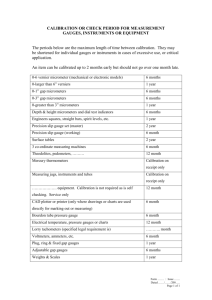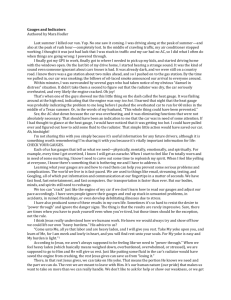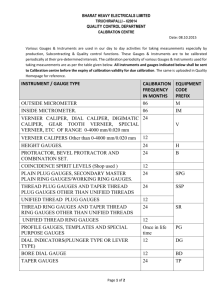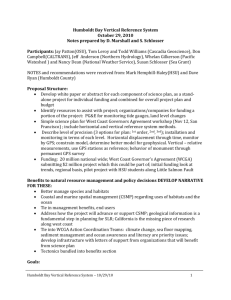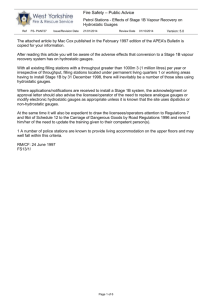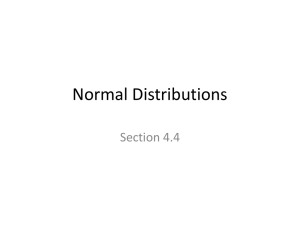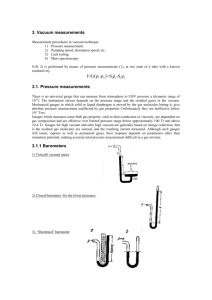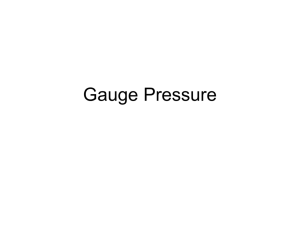5.2 Smooth Limit Gauges
advertisement
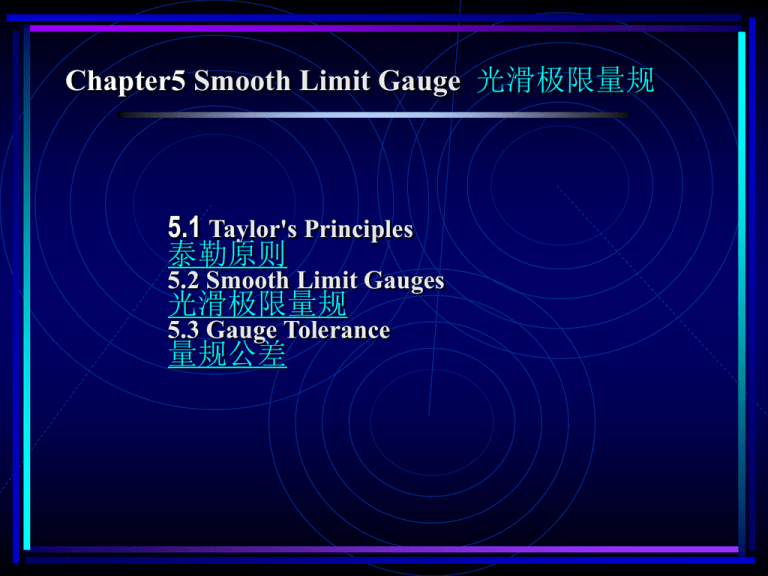
Chapter5 Smooth Limit Gauge 光滑极限量规 5.1 Taylor's Principles 泰勒原则 5.2 Smooth Limit Gauges 光滑极限量规 5.3 Gauge Tolerance 量规公差 5.1 Taylor's Principles • In 1789-1864, Richard Robertsused the plug and collar gauges to inspect the part dimensions; • In 1857, Joseph Whiteworth demonstrated the use of internal and external gauges for a shaft-based limit system • In 1905, Willium Taylor explained the concept of a relationship between the two processes of checking the component. • His concepts, known as Taylor's principles, are used in the design of smooth limit gauges. • Taylor stares that the 'GO' gauge should check all the possible elements of dimensions at a time and the 'NO GO ' gauge should check only one element of the dimension at a time. • 'Go' and 'No GO' gauges should be designed to check the maximum and the minimum material limits of components. 'Go' Limit • 'go' limit is the one between the two size limits which corresponds to the maximum material limit • the upper limit of a shaft and the lower limit of a hole • 'GO' gauge can check one feature of the component in one pass 'NO GO' Limit • 'no go' limit is the one between the two size limits which corresponds to the minimum material condition • the lower limit of a shaft and the upper limit of a hole. 5.2 Smooth Limit Gauges • Smooth limit gauges are used for the measurement test of holes and shafts • The common type include plug gauges, ring gauges, and caliper gauges with the GO and NOT GO sides forming one set 5.2.1 Limit Plug Gauge • Limit plug gauges are fixed gauges usually made to check the accuracy of a hole with the highly finished ends of different diameters • If the hole size is correct within the tolerable limits, the small end (marked “go”) will enter the hole, while the large end (“not go”) will not. Plug Gauge Example • Dimension on part to gauge • The nominal hole size on part to gauge is 1.0000”; • Tolerance of the hole is +0.002”/-0.000” ; • This means the hole must be manufactured somewhere between 1.0000” and 1.0020” in size; 5.2.2 Limit Ring Gauge • Limit plug gauges are fixed gauges usually made to check the accuracy of a shaft with highly finished ends of different diameters is used • If the shaft size is correct within the tolerable limits, the large end (marked “go”) will go through the shaft, while the small end (“not go”) will not. Ring Gauge Example • Dimension on part to gauge: • Post on part to gauge is 1.0000”; • Tolerance of post on part is +0.002”/-0.000”; • This means the post will be somewhere between 1.0000” and 1.0020” in size; 5.3 Gauge Tolerance Wear Allowance

